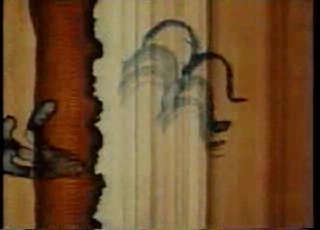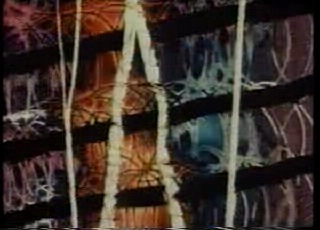 Valarie T. Richard’s out-of-print book Norman McLaren, Manipulator of Movement contains a fascinating account of how Begone Dull Care was made. The film is truely a collaboration between artist and musician. From Richard’s book:
Valarie T. Richard’s out-of-print book Norman McLaren, Manipulator of Movement contains a fascinating account of how Begone Dull Care was made. The film is truely a collaboration between artist and musician. From Richard’s book:
“[Oscar Peterson and Norman McLaren] worked together for four days developing the music. At times Peterson would play variations enabling McLaren to visualize colors and movements, and other times McLaren would describe specific music he wanted for a special effect.”
The score was recorded by Peterson’s trio, featuring Auston Roberts on bass and Clarence Jones on drums (as confirmed in David Meeker’s book Jazz in the Movies). I’ve seen several websites that claim the trio in the film was Peterson’s group with Ray Brown on bass and Ed Thigpen on drums, but the music speaks for itself on this issue. Listen as the medium tempo groove goes into double-time in the first musical segment. The drummer lags way behind the beat, and his brushwork is not nearly as refined as Thigpen, who wrote the book on playing with brushes. Additionally, Peterson’s last record prior to working with McLaren was Rockin’ in Rhythm (1947), which he recorded with the Roberts/Jones rhythm section for the Canadian label RCA Masters. So it makes sense that O.P. would be working with Roberts and Jones for his 1949 collaboration with Norman McLaren.
Musicians tend to think about shapes in music moving hoizontally, from right to left. At least, I do. Interestingly, almost all the motion in Begone Dull Care occurs vertically. Take a look.





 Posted by jazzanimated
Posted by jazzanimated 



